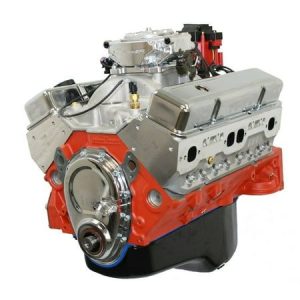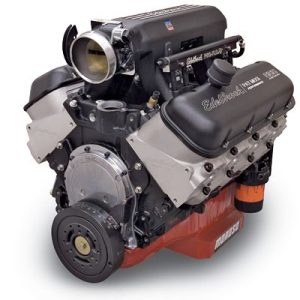Swapping a car engine might seem like a daunting task, but for mechanically inclined individuals or experienced repair shops, it can be a cost-effective way to breathe new life into an aging vehicle. However, before diving into this project, it’s crucial to understand the time commitment involved. So, how long does it typically take to swap an engine?
This guide will delve into the factors influencing engine swap timelines, provide a breakdown of the process, and offer tips to streamline the project. By understanding these aspects, you can make informed decisions about tackling an engine swap yourself or entrusting it to a professional.
Factors Affecting Engine Swap Time
Several factors can significantly impact the amount of time it takes to replace a car engine. Here are the key ones to consider:

-
DIY vs. Professional: The most significant factor is whether you’re attempting the swap yourself or hiring a mechanic. Professionals have the experience and tools to complete the job efficiently, whereas a DIY project can take considerably longer, especially for novices.
-
Engine and Vehicle Compatibility: Swapping an engine from the same car model is generally faster than sourcing a different engine entirely. Compatibility issues may necessitate additional modifications or fabrication, extending the project timeline.
-
Engine Condition: Installing a used engine in good working order is quicker than rebuilding or reconditioning an old engine before installation. The time required to address any pre-existing issues with the replacement engine will add to the overall swap time.
-
Mechanic’s Experience: If you choose to hire a mechanic, their experience level plays a role. Experienced mechanics can complete engine swaps more efficiently than those with less expertise.
-
Availability of Parts: Having all the necessary parts readily available can significantly expedite the process. Waiting for parts to arrive can cause delays, especially for less common engines or specialized components.
-
Project Scope: A basic engine swap involves replacing the engine block and its essential components. However, some projects may involve additional work like swapping the transmission, modifying engine mounts, or upgrading other drivetrain components. A more extensive project will naturally take longer.
A Breakdown of the Engine Swap Process
To understand the time commitment involved, here’s a general breakdown of the engine swap process:

-
Preparation: This involves gathering all the necessary tools, parts (including gaskets, fluids, and replacement components), and draining fluids from the old engine.
-
Engine Removal: The mechanic will disconnect the engine from the transmission, wiring harness, exhaust system, and other components. The engine mounts will be unbolted, and the engine will be lifted out of the engine bay using an engine hoist.
-
Engine Bay Cleaning and Inspection: Once the engine is removed, the mechanic will clean the engine bay to prepare for the new engine installation. This is also a good time to inspect the engine bay for any rust, leaks, or potential issues that may need to be addressed before installing the new engine.
-
Engine Installation: The replacement engine will be positioned in the engine bay and secured using the engine mounts. The mechanic will then reconnect all the necessary components, including the transmission, wiring harness, exhaust system, and other peripherals.
-
Refilling Fluids and Testing: Once everything is reconnected, the mechanic will refill the engine with fresh oil, coolant, and other fluids. The electrical system will be double-checked, and the engine will be started for the first time to check for leaks, proper functionality, and any unusual noises.
-
Test Drive and Adjustments: The mechanic will take the car for a test drive to ensure everything is functioning correctly. Minor adjustments to the engine idle, throttle linkage, or other components may be necessary.
DIY vs. Professional: Weighing the Options
Replacing a car engine can be a complex task, and the decision of whether to tackle it yourself or hire a professional mechanic depends on your skillset, comfort level, and available resources. Here’s a breakdown of the pros and cons of each approach:

DIY Engine Swap:
-
Pros: Potentially lower overall cost, sense of accomplishment, increased knowledge about your car.
-
Cons: Time-consuming, requires significant mechanical knowledge and tools, potential for mistakes leading to further repairs.
Professional Engine Swap:
-
Pros: Faster completion time, experienced mechanics can identify and address potential issues, warranty on labor (in most cases).
-
Cons: Higher overall cost, less hands-on experience with your car.
If you’re considering a DIY engine swap, it’s wise to consult with an experienced mechanic beforehand. They can provide valuable advice, assess the project’s feasibility based on your car and the replacement engine, and potentially offer guidance throughout the process.
Tips for Streamlining an Engine Swap Project
Whether you tackle the engine swap yourself or entrust it to a professional, here are some tips to streamline the project and minimize downtime:

-
Planning is Key: Before diving in, thoroughly research the engine swap process specific to your car model and the chosen replacement engine. Gather a detailed repair manual and create a checklist of all the parts, tools, and fluids you’ll need.
-
Gather All Parts Upfront: Having all the necessary parts readily available can significantly reduce project delays. Order parts in advance, considering potential lead times for less common components.
-
Organize Your Workspace: Dedicate a clean and well-lit workspace to the project. Label and organize parts to avoid confusion and wasted time searching for components during the process.
-
Work Methodically: Follow the repair manual step-by-step and don’t rush the process. Taking your time and double-checking your work can help prevent mistakes that might lead to further complications.
-
Label Everything: As you disconnect components from the old engine, label them clearly with masking tape or zip ties. This will make reassembly much easier and ensure everything gets connected back to the correct location.
-
Take Pictures and Videos: Documenting the disassembly process with pictures and videos can be a lifesaver during reassembly. Having a visual reference of how everything was connected before can be invaluable, especially for complex projects.
-
Don’t Be Afraid to Ask for Help: Even experienced DIYers encounter unforeseen challenges. Don’t hesitate to consult with online forums, mechanic communities, or experienced friends for advice if you get stuck.
The Cost of Replacing a Car Engine
The cost of replacing a car engine can vary significantly depending on several factors:
-
Labor Costs: Professional mechanics typically charge an hourly rate for labor. The complexity of the swap and the mechanic’s experience level will influence the total labor cost.
-
Engine Cost: The price of the replacement engine depends on factors like the engine type, condition (new, rebuilt, used), and its origin (from a junkyard, reputable parts supplier, etc.).
-
Parts and Fluids: Gaskets, oil, coolant, and other necessary parts will add to the overall cost.
-
Additional Work: If the project involves modifications, additional parts, or addressing pre-existing issues, the cost will naturally increase.
As a general estimate, a basic engine swap might range from $2,000 to $5,000, with more complex projects potentially exceeding $10,000.
Obtaining quotes from several mechanics before starting the project is recommended. This will give you a clearer picture of the potential costs involved.
The Road to Revival: Considering a Remanufactured Engine
Remanufactured engines offer an alternative to used engines and can be a good option for those seeking a reliable replacement with a warranty. Here’s a quick breakdown:

-
Remanufactured Engines: These engines undergo a comprehensive rebuilding process, where worn parts are replaced with new or high-quality components. They typically come with a warranty, offering peace of mind regarding their reliability.
-
Pros: Remanufactured engines offer a balance between affordability and reliability compared to new engines. They come with a warranty and can be a good option for those who want to avoid potential issues with used engines.
-
Cons: Remanufactured engines can still be more expensive than used engines, and the warranty terms may vary depending on the remanufacturer.
Rev Up Your Ride: Breathe New Life into Your Car
Swapping a car engine can be a rewarding project, giving an older car a new lease on life. By understanding the time commitment, factors affecting the process, and the available options, you can make an informed decision about tackling the project yourself or entrusting it to a professional. Remember, careful planning, quality parts, and a methodical approach are key to a successful engine swap.



